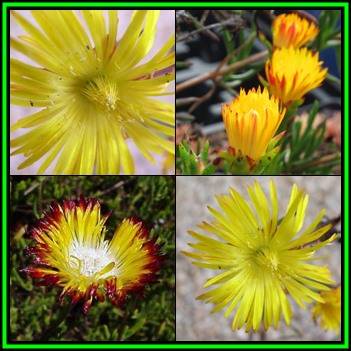
Lampranthus bicolor - 20 Seed Pack - Indigenous Endemic Succulent Mesemb - NEW
Check my rate
| Main centres: | 1-3 business days |
| Regional areas: | 3-4 business days |
| Remote areas: | 3-5 business days |

| Main centres: | 1-3 business days |
| Regional areas: | 3-4 business days |
| Remote areas: | 3-5 business days |
The name is derived from the Greek words, lampros (bright) and anthos (flower), referring to the large showy flowers. The Lampranthus genus is one of the largest genera in the Aizoaceae family. They are all succulents and the genus consists of 227 species and 13 varieties, all of which belong to a group of plants collectively known as Mesembs or Vygies in Afrikaans. The genus Lampranthus occurs mainly in the Western Cape, Northern Cape and southern Namibia, although some species do occur in Eastern Cape as well. Flowering occurs at all times of the year, though most cultivated species usually flower in spring or early summer. They are occasionally called midday plants because the flowers open by mid-morning and close again in the late afternoon. The flowers of some species are strawberry scented.
Lampranthus bicolor commonly known as Bicoloured Lampranthus in English and Bont Vygie in Afrikaans is a South African endemic succulent found in the Western Cape Province from the Cape Peninsula to Mossel Bay and Bredasdorp. This is a beautiful species; when in bud, it displays the orange-red on the reverse of the petals, and as it opens it reveals their bright yellow upper surface. Flowering time is from October–January. Lampranthus bicolor is an erect, stiffly branched shrub. It grows up to about 300 mm tall. The leaves are more or less cylindrical to three-sided, 12–35 mm long, and have reddish tips. The flowers are up to 35 mm in diameter, borne singly or in clusters of 2 or 3 at the tips of the branches. The petals are bright yellow on the upper surface and orange-red underneath.
|